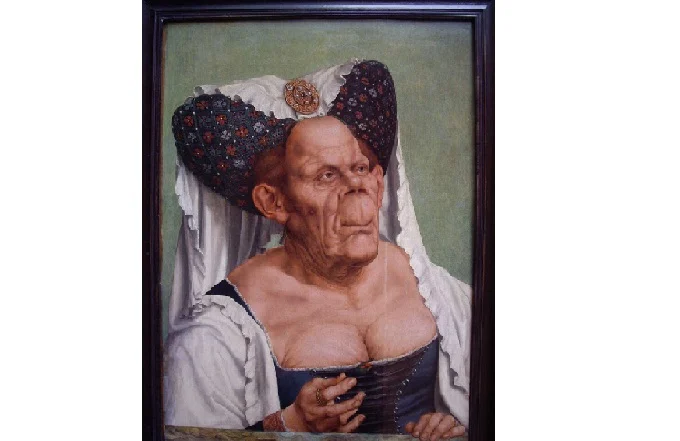Medieval bullying: why Margaret Maultasch went down in history as the ugliest Duchess

Even though in the 21st century, such terms as bullying, abuse, and harassment have become widespread, people have constantly bullied other people, bullied now and, most likely, will continue to bully. Such is human nature: some do not realize that the humiliation of the defenseless is, rather, a manifestation of weakness and pettiness than strength.
In the Middle Ages, bullying could reach such proportions that a modern depressed teenager never dreamed of. The last Countess of Tyrol Margarite for conducting a fair and correct policy received the stigma of the ugliest Duchess in the world and at the same time an offensive nickname – Maultasch, which roughly means “bag mouth.”
Childhood, wedding, and revolution
Margaret was born in 1318 in the family of the ruler of Tyrol and concurrently King of Bohemia, Henry, count of Tyrol and duke of Carinthia. According to medieval traditions and out of love for early dynastic marriages, at the age of 11, the girl was married to a representative of the Luxembourg dynasty John Henry, who, by the way, was only 7. The two royal teenagers’ happy (or maybe not so) family life did not last long, therefore that five years later, Margaret’s father died. In the absence of male heirs, the lands of Tyrol had to pass into the possession of the Austrian family of Habsburgs – these were the conditions of the agreement concluded earlier.
Margaret, in turn, decided that such an alignment did not suit her and persuaded the know to arrange a coup. Even though in those days, blue-blooded teenagers got up to no less desperate adventures, for a 17-year-old girl to arrange a revolution, you must admit, is not as easy as it seems.
Nevertheless, thanks to a competent, fair, and tough policy, the Duchess of Tyrol achieved independence for her state and began to rule the lands that rightfully belonged to her.
From love to bullying
At first, Margaret tolerated her young husband. Still, John henry lounged around, feasted, hunted, and did not hesitate to spend time in the company of other women, being in his wife’s castle. After 6 years of such abuse, in 1341, Margaret was tired; she kicked her spouse out of her castle in disgrace and divorced unilaterally with the support of local nobles.
The offended John went to whine to the Vatican personally to the Pope about the injustice and cruelty of Margaret concerning her rejected spouse. The chief priest of all Europe brought up in the spirit of the Middle Ages, naturally did not appreciate such a trick on the part of the Tyrolean countess. He ordered her to let Johann go home and stop misbehaving for the Christian church
However, Margaret is a woman with character. She closed the gates of the family castle in front of the negligent husband’s nose and remarried – to the Duke of Bavaria Ludwig, who was also one of the main opponents of the Pope. Then the Vatican did not think of anything better than to start persecuting an innocent woman out of impotence. Since then, the priests began to call her Margaret Maultasch, that is, Margaret “bag mouth,” hinting at her evil, about which contemporaries generally do not know anything. Most likely, the Pope slandered his offender, but Margaret, in general, was not very offended because the real problems fell on the real name of the Tyrolean Duchess much later.
Posthumous mark of ugliness
When Margaret was 43 years old, her husband died, and three years later, their joint son Meinhard III. Already old enough by medieval standards and even tired of the turbulent shocks of youth and offensive nicknames, the Duchess of Tyrol gradually gave up her positions.
Austria put more and more pressure on her with the demand to transfer the Tyrolean lands into the possession of the Habsburgs, and, unable to withstand the pressure, she surrendered. On rather unpleasant conditions: according to the concluded agreement, she could no longer appear in her native land, so Margaret lived her last days in Vienna, where she died in splendid isolation.
However, after about 150 years, she was reborn in portraits of European artists, depicting her as an almost mythical monster: an ugly face, a huge jaw, sometimes even horns adorned Margaret’s face. The thing is that most of the records about the last ruler of Tyrol were written by Austrians, Bavarians, or
Priests who, as you know, disliked the heroine. Naturally, they described her as a terrible, horrible monster, with a huge lip and a mouth that looked like a purse.
Little-known artists and writers fell under the influence of evil languages and such eminent cultural figures as Leonardo da Vinci and the Brothers Grimm. Leonardo sketched the Duchess, presenting her as a uniform monster, and Quentin Massys completed his work by painting a rather vivid portrait with the telling title “The Ugly Duchess.” The Brothers Grimm, in turn, collected all the tales about Margaret and, having reworked a little, sent them to the collection of their stories. She also became the prototype of Duchess Lewis Carroll from his “Alice in Wonderland.” In Lewis Tenniel’s illustrations, you will see a painfully familiar ugly face with a huge mouth and wide cheekbones.

Despite this, Margaret’s contemporary Johann von Winterthur claimed that she was quite pretty. On the only surviving official image of the Duchess – her personal seal, you can see the tall, rather slender, and certainly not ugly last ruler of Tyrol – Margaret.




